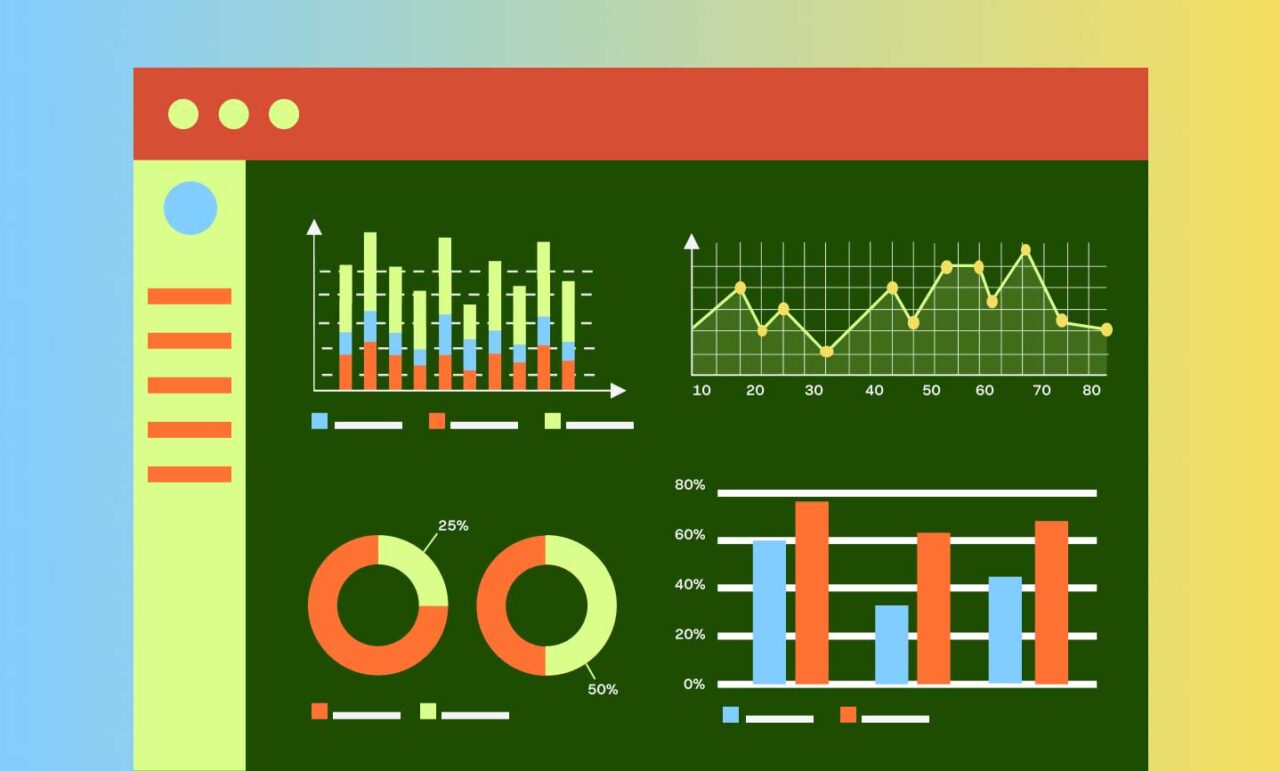From Numbers to Strategy: How to Interpret Digital Data

WANT TO SEE MORE LIKE THIS?
Sign up to receive an alert for our latest articles on design and stuff that makes you go "Hmmm?"
In today’s data-driven world, marketers have access to many insights. Most businesses already have analytics tools in place, but often, the full potential of this data is left untapped. If you’re collecting data, but aren’t sure what to do with it, you’re not alone. In this blog, we’ll show you how to turn raw numbers into strategic, data-backed marketing decisions. This will help you with tactics like optimizing campaign landing pages and developing influential ads. Understanding your data is crucial to unlocking new opportunities.
Understanding the Data You Have

Marketers and business owners alike have a wealth of digital data. Tools like Google Analytics provide insights into key metrics like user behavior, traffic sources and conversions. Analyzing this data can help you maximize your marketing efforts. For example, traffic source data tells you where visitors are coming from – whether it’s organic search, paid ads or social media. Understanding this can guide your strategy by showing which channels drive the most valuable traffic.
We can also use Google Analytics to analyze audience reports and behavior flow. This provides detailed views of how users interact with your website. Audience reports give insights into who your visitors are – age, location, devices used – helping you understand your target demographic. Behavior flow reports show the journey users take on your website – what page did they originally land on, and what pages they visited before leaving the site.
Other key metrics to monitor include conversion rate, which measures the percentage of visitors who complete a desired action; bounce rate, which shows how many visitors leave after viewing only one page; and sessions, which track how often users engage with your website.
By regularly reviewing these metrics, you can better understand user behavior and make data-driven decisions to drive effective marketing results.
Analyzing Trends and Patterns in Your Data

Once you know what tools to use and what data to monitor, it’s important to identify trends and patterns. By analyzing patterns, you can make informed decisions that align with your goals.
Start by looking for traffic spikes that match the timing of specific campaigns or marketing initiatives. For example, if you notice a sudden increase in traffic following the launch of a paid ad campaign, this indicates that the campaign is successful. You can now feel confident allocating more resources to similar campaigns in the future.
Second, look for how much time users spend on specific types of content. For example, if users are spending more time on your case studies vs your video posts, it suggests that your audience better resonates with long-form, informative, written content. In response, you can ensure your marketing plan includes time to create, post and promote case studies moving forward.
Depending on your business, you might also benefit from analyzing seasonal trends and patterns. Compare year-over-year traffic to verify if those trends are occurring annually. If yes, plan for marketing activities during these peak periods to achieve maximum impact.
Third, consider traffic patterns related to user demographics. If data shows that a certain industry group or age group engages more with your content, you can tailor future campaigns to that group. This could include tailoring marketing materials based on what they’re responding best to (for example, webinars vs live events) as well as platforms (Instagram vs LinkedIn, for example). Tailoring based on user demographics helps increase conversion rates by addressing that audience’s needs and interests.
Lastly, identify trends in referral traffic. If you notice a particular industry partner is consistently sending traffic to your website, this indicates an influential collaboration. Recognizing the impact of referral sources will help you plan out partnerships and collaborations for the year ahead.
Avoiding Common Pitfalls in Data Interpretation
Now that we know what patterns to look for, let’s review some common pitfalls. It’s important to understand the meaning behind pieces of data and not just the raw number itself. For example, high traffic looks appealing, but it usually doesn’t mean much until it’s compared against engagement or conversion rates. Remember to focus on metrics that align with your objectives, such as lead generation or conversions.
Another thing to consider is success misattribution. For example, while running a search campaign, your website may see an uptick in traffic or conversions. We shouldn’t assume the campaign is solely responsible for this increase without also taking into account seasonality or other forms of marketing campaigns happening at the same time. Data can be misleading if viewed in isolation. Always look at the big picture.
You’ll also want to consider the length of time you’ve been collecting a data set. Comparing month-over-month traffic, or even year-over-year, will greatly assist in interpreting results. Data gathered from short periods, with no other data sets to compare against, makes it much more difficult to inform future decisions. Try and collect at least three months’ worth of data to obtain an accurate representation of the metric you’re tracking.
Turning Data into Actionable Strategies
Once you have a clear understanding of your data and how to track it, the next step is turning those patterns and insights into actionable marketing strategies. Every decision should be backed by data. This will help all marketing efforts achieve successful results. Here are a couple of examples:
If your website has pages with high bounce rates, it’s worth investigating what might be causing users to leave so quickly. The content may need to be updated. The page may load too slowly because of high-resolution images or video. Or, you have ads from a paid campaign directing traffic to this page, but the ad copy isn’t relevant to the page content.
On a positive side, if your webinar sign-up form receives many conversions while running a paid ads campaign with Google, then you can plan to run similar campaigns in the future with the same targeting and messaging to achieve successful results again.
Now’s the time to get started
It’s never too early to start collecting, tracking and understanding your digital data. The sooner you can uncover trends, the sooner you can plan for more successful campaigns.
As you continue to refine your approach, always remember to set goals, look for patterns and collect as much data as you can.
Still don’t know where to start? Reach out! We’d love to help.


